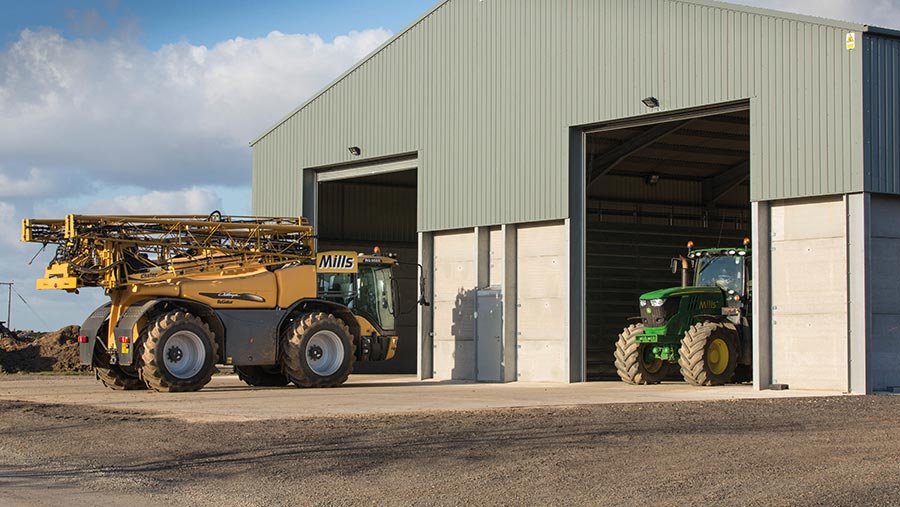Business Clinic: How to keep building insurance up-to-date
 © Tim Scrivener
© Tim Scrivener Whether it’s a legal, tax, insurance, management or land issue, Farmers Weekly’s experts can help.
Liam Hewitt, account executive at A-Plan Rural Insurance advises on correctly insuring the value of buildings.
Q: I’m very conscious that building costs have increased substantially over the past couple of years, and I know I need to keep mine accurate to ensure I’m fully covered. What else can I do throughout the year to make sure my different insurances are up to date?
See also: Business Clinic: How to get best value on vehicle insurance
A: This is a question we’ve been asked a lot recently, and with good reason. As farmers, you’ll have seen all sorts of costs rise, from fertiliser to fuel to building costs.
The costs of both labour and materials have shot up, made worse by supply issues and rising inflation.
This means that the risk of having an inaccurate insurance valuation is particularly high at present.
We see too many farmers rely on old, out-of-date figures. Crucially, as a business insurance policyholder, the onus is on you to ensure that your insurance is up-to-date and accurate.
In particular, as explained in a previous Business Clinic, you should always insure your business premises against the cost of rebuilding the property, rather than its sale price or current market value.
There will be quite a big difference between the two.
Failure to keep insurers up-to-date can result in claims being rejected or only partially paid. Keep your insurer updated and try not to treat insurance as a once-a-year job.
Your obligations apply at the start of the policy, throughout the term, and at renewal.
Changes happen throughout the year and it’s important you let insurers know as soon as possible – preferably before they actually happen.
Such changes might include:
- If buildings are left vacant: insurers may be reluctant to provide cover for vacant properties, or charge higher premiums, as they’re more susceptible to break-ins and vandalism. Your cover will often reduce if a property is left unoccupied and unused. The timescale will depend on your policy, so check the small print or speak to your broker
- Building works: you’ll need to tell your insurer about any changes or alterations you’re planning on making to the structure of your properties
- Improvements: if you plan to carry out refurbishments, extensions or new builds, inform your insurer to check the work won’t invalidate your policy, and to ensure you have sufficient cover in place
- New activities: if, for example, you are seeking to diversify, and plan to switch the use of buildings from agricultural to other commercial use – for example to transform into glamping lots or petting farms – then inform your insurer of the building’s change of use.
Additionally, don’t forget the importance of ongoing maintenance and upkeep. Are your properties still in good condition? Any maintenance and repair, and problems with the structure of the building, are up to you to deal with.
So, how do you calculate your buildings’ rebuild value and when should you do it?
The most accurate way is to arrange an expert to visit your farm to estimate the insurance rebuild value of your agricultural buildings.
If changes are made to a building or its use, a further assessment may be needed.
Remember to notify your insurer of changes as or before they take place; it’s easy to forget everything that has happened in the past 12 months.
As always, speak to your broker, who can help you ensure your insurances are all up to date.
Do you have a question for the panel?
Outline your legal, tax, finance, insurance or farm management question in no more than 350 words and Farmers Weekly will put it to a member of the panel. Please give as much information as possible.
Email your question to FW-Businessclinic@markallengroup.com using the subject line “Business Clinic”.
